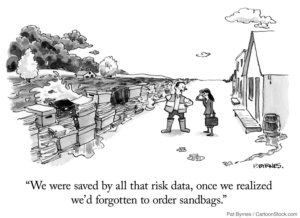The InsuResilience Partnership Forum is the global flagship event of the climate and disaster risk financing community bringing to together members of the InsuResilience Global Partnership and the wider resilience community to exchange knowledge on lessons learnt best practice and innovations. This year, due to the Covid-19 pandemic, the Partnership Forum was organised as a 4-day virtual session from 7th – 10th December 2020. The Forum featured seven sessions of 2-hours each with a total attendance of 1,076 and four side events hosted by members of the Partnership.
Under the theme “Protecting development in a changing climate risk environment” this year’s Partnership Forum provided a platform for open and joint reflection on the compounding effect of the Covid-19 pandemic and climate threats on poor and vulnerable communities.
Discussion over the four days centred on how to preserve development gains through strategic collaboration, anticipatory action and desiging disaster risk managmennt instruments that are fit for purpose.
Day 1: High-Level Event: From strategy to implementation – deliverables on the road to Vision 2025
Discussions revolved around lessons from the Tripartite Agreement and Global Risk Financing Facility (GRiF) implementation, key innovations and essential steps to reaching the Partnership’s Vision 2025. The panellist reiterated the need for a favourable enabling environment for smart market creation and insurance regulation, capitalising the potential of artificial intelligence for developing disaster risk models and systems and strategic collaborations that develop the response mechanism and capacity of climate and disaster vulnerable countries.
“Proactive investments in risk analysis and risk reduction, including in early warning systems and digital infrastructure, as well as in risk transfer mechanisms such as social protection, can allow to combine responses to the pandemic and climate impacts; and thus, maximise their cost-effectiveness in light of scarce resources.” – Hon. Minister Alfred Alfred Jr., V20 Co-Chair of the High-Level Consultative Group of the Partnership.
“The High-Level Consultative Group of the Partnership also decided to drive forward the systemic integration of risk finance into national adaptation planning, into countries’ updates of their Nationally Determined Contributions under the Paris Agreement.”- Dr Maria Flachsbarth, G20 Co-hair of the High-Level Consultative Group of the Partnership.
Day 2: Interactive Solution-Building: Decision-Making under Uncertainty in a Changing Multi-Hazard Climate and Disaster Risk Environment
Day 2 explored how to better prepare in a changing risk environment and what lessons we can extract from the Covid-19 crisis to make better decisions under uncertainty. Key outcomes from this session were the need for understanding risk as a prerequisite for sustainable development and resilience, the potential of risk analytics to inform better decision making.
 An impulse speech and discussions highlighted to set up strategic collaborations and partnerships that foster innovative approaches and included a call for a more transformational change to manage compound risks from local to global levels. Participants were inspired and triggered into reflection by cartoon sketches from the moderator of the session Pablo Suarez.
An impulse speech and discussions highlighted to set up strategic collaborations and partnerships that foster innovative approaches and included a call for a more transformational change to manage compound risks from local to global levels. Participants were inspired and triggered into reflection by cartoon sketches from the moderator of the session Pablo Suarez.
Day 3: Regional Learning: How does Climate and Disaster Risk Financing contribute to building resilience?
Throughout the entire day four 2-hour sessions were dedicated to countries in Asia, Africa, Latin America and the Caribbean and Pacific Regions. Beside a deep dive into specific solutions and strategies within the countries significant learnings across the sessions were, ownership and understanding of risk and risk models in vulnerable countries should be encouraged, the availability and access to risk data are critical for policy decisions, and developing institutional capacity to establish comprehensive and strategic risk layered approaches is a process and takes time.
Take a deep-dive into the four country case studies:
- Regional Learning, Asia – Vietnam Case Study; Part 1, Part 2
- Regional Learning, Africa – Kenya Case Study; Part 1, Part 2
- Regional Learning, Latin America and the Caribbean, – Peru Case Study; Part 1, Part 2
- Regional Learning, Pacific – Fiji Case Study; Part 1, Part 2
Day 4: Presenting Evidence on how Climate and Disaster Risk Finance and Insurance (CDRFI) impacts lives
The last day focused on the impact of Climate and Disaster Risk Finance and Insurance (CDRFI) solutions and how to measure it. The session presented the comprehensive monitoring and evaluation strategy of the InsuResilience Global Partnership as framing for discussions on gaps and success factors that limit or contribute to achieving more significant impact within CDRFI projects. Some key outcomes from this session were that local partnerships and ownership of risk management strategies are essential to resilience building and there is an opportunity to develop hybrid research that is appealing to implementors and academia.
Read the detailed summaries of the four days in the 2020 Annual Report of the Partnership that will be released in January 2021 for the Climate Adaptation Summit.
